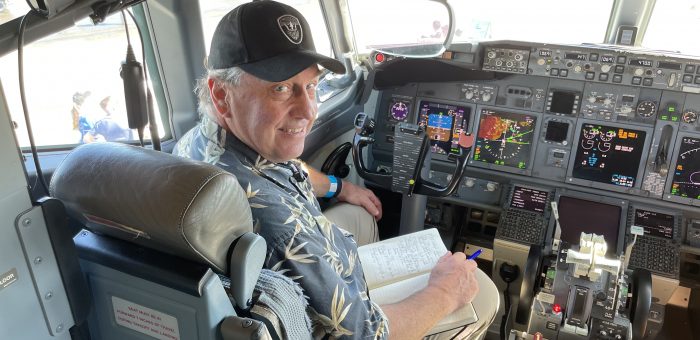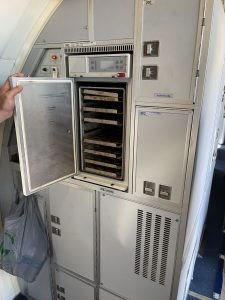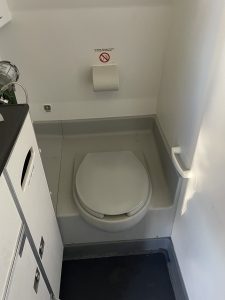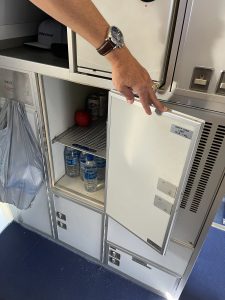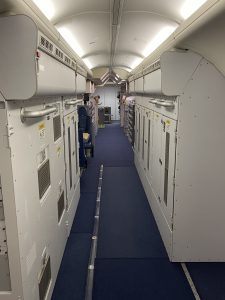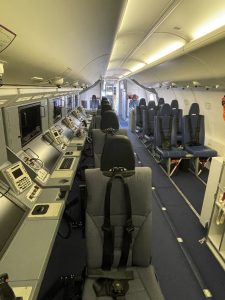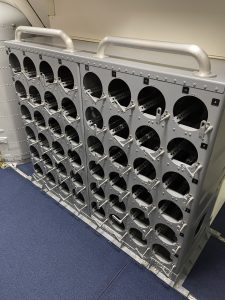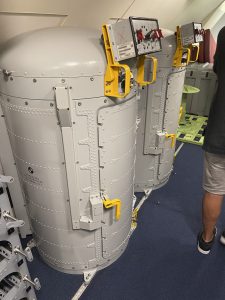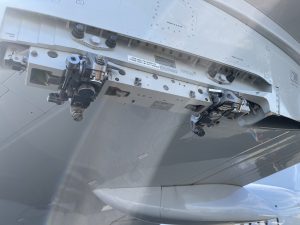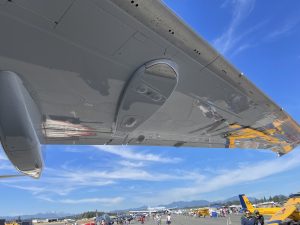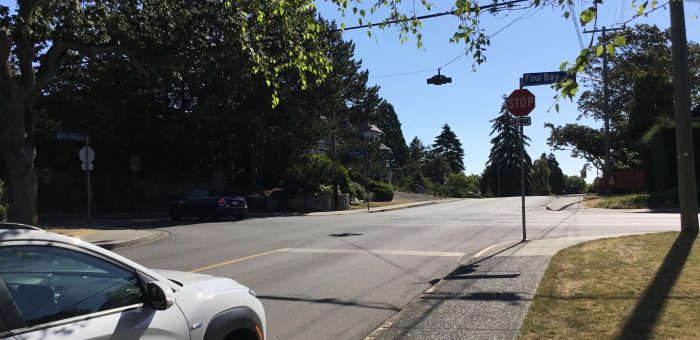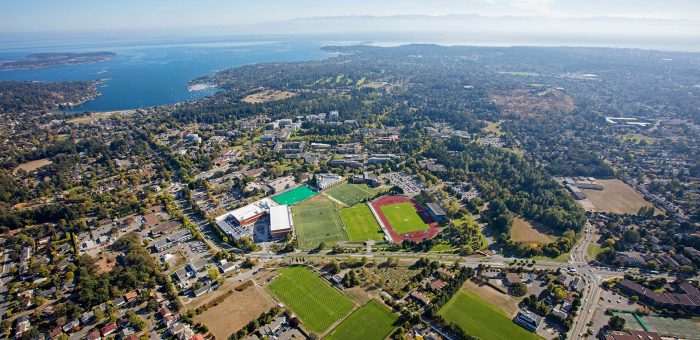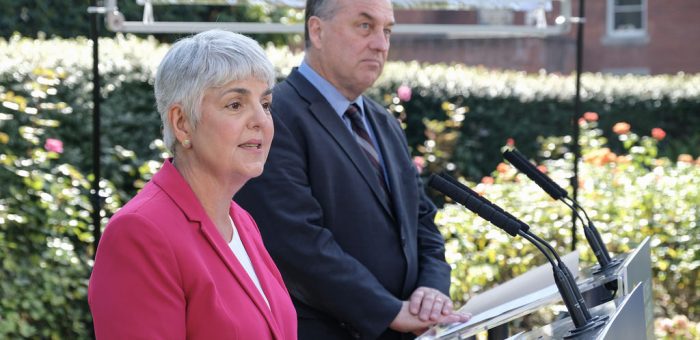Transportation
An exciting time in BC politics: Where do we go from here?
Elections BC has announced the initial 2024 BC Election results and I am absolutely thrilled to see how things played out on October 19. While recounts are scheduled for two ridings where the NDP presently lead by < 100 votes (Juan de Fuca-Malahat and Surrey Centre), and about 49,000 absentee and mail-in ballots have yet to be counted, the NDP hold a one seat lead with the BC Greens once more holding the balance of power.
Embedded within the election results are some very clear messages that party leaders should heed.
 First, neither the BC Conservatives nor the BC NDP received a majority suggesting:
First, neither the BC Conservatives nor the BC NDP received a majority suggesting:
- British Columbians no longer want to be guinea pigs in Eby’s tone deaf policy experiments. They want him to empower his cabinet, work hard to reach consensus with his cabinet colleagues and start listening to what regular folk are saying. Eby’s failure to obtain a majority was not unexpected. As I wrote in the Vancouver Sun on July 9, 2024:
Since assuming the premier’s chair in November 2022, radical ideological-driven activism, empty promises with destructive consequences, and out-of-touch hubris embody the hallmarks of his tenureBut British Columbians have given David Eby a second chance under the watchful eyes of the BC Greens.
- British Columbians did not trust the BC Conservatives enough for them to be given the keys to governance. The BC Conservatives had too many inexperienced candidates, too many candidates associated with odd conspiracy theories, and too much uncertainty surrounding them to be granted a majority. Yet British Columbians have put the BC NDP on notice that they need to do better. A strong BC Conservative caucus has emerged and that caucus will only get stronger as they gain more experience in the BC Legislature. The BC Conservatives will be eager to demonstrate why they are a government in waiting.
 Second, the BC Greens were also sent a very clear message. The ecosocialist, far left direction that the present leader has taken the party did not resonate with British Columbians. The BC Green popular vote was slashed in half from the 17% obtained in 2017, the last time the BC Greens held the balance of power. And the BC Green leader was easily beaten by the BC NDP candidate in the progressive riding of Victoria-Beacon Hill.
Second, the BC Greens were also sent a very clear message. The ecosocialist, far left direction that the present leader has taken the party did not resonate with British Columbians. The BC Green popular vote was slashed in half from the 17% obtained in 2017, the last time the BC Greens held the balance of power. And the BC Green leader was easily beaten by the BC NDP candidate in the progressive riding of Victoria-Beacon Hill.
 Yet two BC Greens got elected. These were in the ridings of West Vancouver-Sea to Sky and Saanich North and the Islands. West Vancouver-Sea to Sky (and its predecessor West Vancouver-Howe Sound) has been a BC Liberal stronghold since 1991; Saanich North and the Islands was another BC Liberal stronghold since 1991 (until Adam Olsen appeared on the scene in 2013). And I was first elected as a BC Green MLA in 2013 by unseating a BC Liberal cabinet minister who had represented the riding for 17 years.
Yet two BC Greens got elected. These were in the ridings of West Vancouver-Sea to Sky and Saanich North and the Islands. West Vancouver-Sea to Sky (and its predecessor West Vancouver-Howe Sound) has been a BC Liberal stronghold since 1991; Saanich North and the Islands was another BC Liberal stronghold since 1991 (until Adam Olsen appeared on the scene in 2013). And I was first elected as a BC Green MLA in 2013 by unseating a BC Liberal cabinet minister who had represented the riding for 17 years.
 If the BC Greens want to remain relevant, they have a very clear pathway forward. And that pathway involves repositioning the party as a viable centrist option that is fiscally conservative, socially progressive and environmentally responsible. But that can only happen with a new leader at the helm who can once more inspire the centrist voters back to the party.
If the BC Greens want to remain relevant, they have a very clear pathway forward. And that pathway involves repositioning the party as a viable centrist option that is fiscally conservative, socially progressive and environmentally responsible. But that can only happen with a new leader at the helm who can once more inspire the centrist voters back to the party.
Sustainable Aviation Fuel — Opportunities for Innovation in Aviation Sector
With the summer holiday season coming to an end, and after hearing no end of COVID-related horror stories (delays, cancelled flights, staff shortages, passport issues) from friends and family who decided to travel by air to destinations afar for the first time in several years, I thought I would spend some time exploring climate solutions in the aviation sector.
the summer holiday season coming to an end, and after hearing no end of COVID-related horror stories (delays, cancelled flights, staff shortages, passport issues) from friends and family who decided to travel by air to destinations afar for the first time in several years, I thought I would spend some time exploring climate solutions in the aviation sector.
As I noted in my recent presentation to the BC Aviation Council May Conference 2022, Transportation in the aviation sector affects our climate through two main ways. The first, and most obvious, is via the emissions of greenhouse gases associated with the combustion of jet fuel. In 2020, international (not including domestic) aviation was the 10th biggest total emitter of carbon (171.15 Megatonnes) world wide (behind China, USA, India, Russia, Japan, International Shipping, Germany, Iran and South Korea). In total, aviation accounts for about 2.5% of global emissions of carbon dioxide.
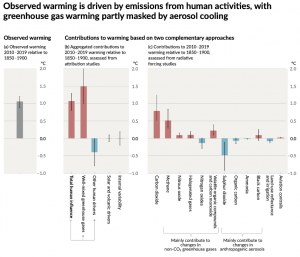 The second main way that aviation affects the climate system is through the creation of contrails. Contrails occur when moisture in jet exhaust condenses in the high altitude cold ambient environment to create lines of thin cirrus clouds, comprising ice crystals, whose net effect is to warm the Earth further. While innovation in flight path planning is ongoing in an effort to reduce contrail formation, off the shelf solutions to replace jet fuel appeared elusive, until recently.
The second main way that aviation affects the climate system is through the creation of contrails. Contrails occur when moisture in jet exhaust condenses in the high altitude cold ambient environment to create lines of thin cirrus clouds, comprising ice crystals, whose net effect is to warm the Earth further. While innovation in flight path planning is ongoing in an effort to reduce contrail formation, off the shelf solutions to replace jet fuel appeared elusive, until recently.
On August 6 and 7, 2022 I attended the Abbotsford Air Show to learn about innovation in the aviation industry and the use of sustainable aviation fuel (SAF), sometimes known as biojet fuel. I was quite excited by what I discovered as it appears that Canada is uniquely positioned to be an international leader in this area.
It was evident to me that the aviation industry is deeply concerned about their greenhouse gas emissions and that they are investing heavily in carbon-neutral technology pathways. While we can expect to see the increasing use of electric engines, hydrogen fuel cell technology and even potentially hydrogen combustion from onboard cryogenic storage tanks, these will likely only be available for commuter, regional and short haul flights (<120 minute with < 150 passengers) over the next decade or two. Unfortunately, such short-haul flights only account for about 27% of global carbon dioxide emissions from the aviation sector whereas medium and long haul flights account for the remaining 73%. And so, if we want to reduce emissions from the aviation sector over the next few decades, widespread adoption of SAF made from renewable organic waste will be required.
A number of companies, including Neste, Lanzajet and World Energy have either been recently established or are already heavily invested in producing SAF using renewable ethanol from waste (such as cooking oil) as an initial focus. Of course, establishing sustainable supply chains for organic waste that don’t involve food stocks (e.g. Canola) or limited supplies of cooking oil will be needed if SAF is to scale up globally. Other companies (e.g., Licella, Ensyn, Steeper Energy etc.) are also heavily invested in exploring the potential of non-food source related waste (e.g. from forestry, municipal waste, sewage, waste plastic etc.) as feed stock for renewable fuels.
 And herein comes the potential opportunity for British Columbia and Canada.
And herein comes the potential opportunity for British Columbia and Canada.
First, the University of British Columbia’s Department of Wood Science is already considered an international leader in biofuel research and hosts the British Columbia Sustainable Marine, Aviation, Rail and Trucking (BC-SMART) consortium. British Columbia and Canada are well positioned to capitalize on investments in research and innovation in this sector.
Second, British Columbia has no shortage of wood or other organic waste that could potentially sustain domestic supply chains for biofuel production.
Third, wood waste, such as slash piles left behind after logging activities have concluded, are often either burnt in situ, left to decompose, or eventually act as a fuel source for wild fires. Removing this waste and converting it to biofuel has significant environmental co-benefits.
Fourth, wood waste is distributed throughout British Columbia, and in particular rural BC. Capitalizing on the opportunities afforded by the harvesting of wood (or other organic) waste would provide distributed economic opportunities for indigenous and non-indigenous communities across our province.
In 2018 I wrote extensively about the challenges and opportunities associated with greenhouse gas reductions in British Columbia. In particular, I noted that embedded in the confidence and supply agreement that I signed with the BC NDP in 2017 was the following commitments:
Climate Action
-
- Implement an increase of the carbon tax by $5 per tonne per year, beginning April 1, 2018 and expand the tax to fugitive emissions and to slash-pile burning;
- Deliver rebate cheques to ensure a majority of British Columbians are better off financially than under the current carbon tax formula;
- Implement a climate action strategy to meet our targets.
While British Columbia is on track to dramatically reduce its greenhouse gas emissions in the years ahead associated with our Clean BC climate plan, one of the policy commitments we didn’t deliver on was an expansion of the carbon pricing to slash pile burning. This is important since if a price is attached to slash emissions, an incentive is created to avoid this potential liability and so forestry (and other) companies would be given an economic reason to extract slash from forest operations. Such a price could be set directly (on emissions) or indirectly (via regulation) as was done for fugitive emissions in the oil and gas sector.
So in summary, it strikes me that the sustainable fuel sector for long haul transportation represents an incredible opportunity for innovation that British Columbia and Canada can capitalize on. The economic, environmental and social benefits of investments in this area appear to be far-reaching.
Coming back to the Abbotsford Air Show, one of the planes that I toured was the Boeing P-8A (pictured above). The P-8A is a military plane designed for long-range reconnaissance, surveillance, and submarine detection missions. And here is why this is important.
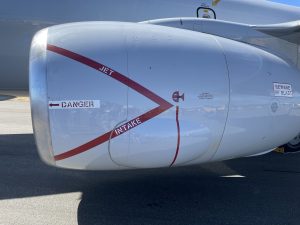 Canada is in the final stages of a procurement process:
Canada is in the final stages of a procurement process:
“To equip the Canadian Armed Forces with a long-range manned Command, Control, Communications and Computers (C4) and Intelligence, Surveillance and Reconnaissance (ISR) and Anti-Submarine Warfare (ASW) aircraft with extended capabilities to replace the CP-140 Aurora.”
The Boeing P-8A represents a solution that may meet the needs of this procurement. Why this is interesting is that the P-8A is already capable of operating on 50% SAF and Boeing has committed to meet a 100% SAF capability by 2030.
Touring the P-8A felt like I was exploring a repurposed Boeing 737 for good reason! The P-8A has a Boeing 737-800 body, 737-900 wings, a 737 cockpit and a 737 engine with a substantive increase in available electrical power. Fully 86% of the commercial components within the P-8A are common with Boeing’s 737 series, the world’s most prevalent passenger jetliner.
Figure: Four images taken inside the Boeing P-8A illustrating its galley and washroom similarities with the Boeing 737 passenger jetliner.
While I do not have the expertise to assess the military capabilities of the P-8A, I learned that 156 of them with over 450,000 logged flight hours, are in military use worldwide (in the US, India, UK, Norway, Germany, Australia, New Zealand and South Korea).
Figure: Four images taken inside the Boeing P-8A showing its military workstations and the sonobuoy storage/release systems
Figure: Two images of the underside of the Boeing P-8A wing indicating wing pylons that allow for the attachment of up to 3,000 lb weapons.
What excited me most about my tour of the Boeing P-8A at the Abbotsford Airshow is that I came away with a sense of optimism and hope for the future of the aviation industry. Imagine the potential for the Canadian military to show international leadership by investing in a sustainable replacement for its CP-140 Aurora fleet that would create a local market for sustainable air fuels produced from locally-sourced slash and other organic waste. While scaling up the use of SAF in the global aviation industry remains a challenge, Canada can do its part positioning itself as a early adopter and international leader in the area.
On the potential closure of Richardson Street at Foul Bay Road
Over the last few days my office has received a number of emails concerning the City of Victoria’s proposed closure of Richardson Street at its junction with Foul Bay Road. The stated goal for this closure is to install bike lanes and limit the traffic along Richardson Street to fewer than 500 cars per day. Unfortunately, the City of Victoria has chosen not to send their proposal to the District of Oak Bay for comment. In my view, this is unacceptable since Victoria is surrounded by neighbouring communities and any traffic flow changes have significant concomitant regional consequences. It’s particularly troubling as Foul Bay Road represents the boundary between Oak Bay and Victoria.
Below I reproduce a letter I sent today to Victoria Council expressing my concerns regarding their lack of consultation.
Text of Letter
Dear Mayor and Council of the City of Victoria,
I am writing to you to express my profound concern regarding your proposed forthcoming developments for Richardson Street at the Foul Bay junction. As you will know, the junction where Richardson Street meets Foul Bay resides squarely in the riding of Oak Bay Gordon Head which I represent.
I understand that Council has unilaterally decided that it wishes to restrict traffic to only 500 cars per day along Richardson Road without consulting with the District of Oak Bay. To meet this arbitrary target, council decided to close off Richardson Street at Foul Bay and hence only allow bike traffic through the intersection.
Richardson Road is one of only two main roads that connect south Oak Bay (where a substantial number of civil servants live) and downtown Victoria. While I applaud your efforts to create more biking infrastructure for the City of Victoria, I remind you that Victoria is surrounded by neighbouring communities and any traffic flow changes have significant concomitant regional consequences. In addition, for many people living in south Oak Bay, cycling is not an option. In my view, it is not appropriate for your council to proceed with this project without formally referring this proposal to the District of Oak Bay for comment.
As you will also know, Oak Bay is planning to expand their active transportation infrastructure. They are in the midst of ongoing consultation and planning. It strikes me as both a missed opportunity and inappropriate for you not to consult with them on your plans. My recommendation to government is that provincial funding requests for the Richardson Corridor project not be considered until such time as said consultation is completed.
I am not sure what, if any, regional traffic flow modelling your council has done on the proposed closure of this intersection. Nevertheless, as someone who was born and grew up in Victoria, I would suggest that all that this will do is divert traffic from South Oak Bay to Fairfield Road. This will greatly increase traffic on side streets throughout the area. As you know, Fairfield Road passes two elementary schools: Margaret Jenkins and Sir James Douglas. This substantially increased traffic flow on Fairfield Road presents a very real, increased danger to the elementary school students. In addition, the substantially increased traffic on the side streets also presents a very real, increased danger to children. Fairfield Road also meanders by Ross Bay Cemetery, Fairfield Plaza and Hollywood Park. In many places, it is very narrow and very busy. Richardson Road, on the other hand, could easily handle separated bike lanes.
I recognize that Victoria Council might counter that they expect traffic to come along Oak Bay Avenue instead. I would suggest that this is certainly not a given as Oak Bay Council is presently exploring traffic options in the Oak Bay Village to make it more pedestrian friendly. In essence, this is precisely why consultation with neighbouring communities is imperative.
Thank you in advance for considering this request that you enter into consultation with the District of Oak Bay in advance of proceeding with the closure of Richardson Road at Foul Bay.
Yours sincerely
Andrew Weaver
MLA Oak Bay-Gordon Head
Cc BC Minister of Transportation (minister.transportation@gov.bc.ca)
BC Minister of Environment (env.minister@gov.bc.ca)
BC Minister of Municipal Affairs and Housing (mah.minister@gov.bc.ca)
Oak Bay Mayor and Council (mayor@oakbay.ca, obcouncil@oakbay.ca)
Response to government investment in pedestrian and cyclist infrastructure
Today the BC government announced a number of investments across the province to improve active transportation options for British Columbians. I’m very pleased that the University of Victoria, in partnership with the District of Oak Bay, received $316,380 toward Oak Bay’s University Drive Connection Pathway. As noted in our press release, reproduced below, this investment will ensure increased safety for those walking or biking to, from, and around the UVic campus. In addition, active transportation is a key element of the province’s CleanBC economic recovery plan.
Media Release
MLA Weaver response to B.C. government investment in pedestrian and cyclist infrastructure
For Immediate Release
June 24, 2020
Victoria, BC — Today’s announcement by the provincial government regarding investments in pedestrian and cyclist infrastructure on Vancouver Island comes as welcome news. Included in the investment is funding of $316,380 towards Oak Bay’s University Drive Connection Pathway, a bi-directional pathway which will vastly improve commuting and safety for cyclists and pedestrians in the riding of Oak Bay-Gordon Head. This active transportation infrastructure project is expected to be completed by March 2021.
“I’m delighted that the province is investing in active transportation on the University of Victoria campus in partnership with the District of Oak Bay”, commented Andrew Weaver, MLA for Oak Bay Gordon Head, “investing in active transportation is a key element of the province’s CleanBC economic recovery plan”.
“With nearly 22,000 students, this investment will ensure increased safety for those walking or biking to, from and around the campus.”
-30-
Media contact
Judy Fainstein
Executive Director
Legislative Office of Andrew Weaver, MLA
+1 250-744-7615 | Judy.Fainstein@leg.bc.ca
Why I support and will vote for BC Government Budget 2020
On Thursday this week members of the BC Legislature will vote on the BC NDP’s 2020 budget.
The BC NDP’s 2020 budget continues to build on the positive work done since my colleagues and I first signed the Confidence and Supply Agreement (CASA) in 2017. The Premier and I reiterated our ongoing support for the CASA agreement in letters we exchanged shortly after I left the BC Green Caucus to sit as an independent as their leadership race unfolds.
In my view, Budget 2020 delivers on multiple fronts by making investments which will benefit numerous demographic groups. And rather than becoming mired in politically expedient short-termism, the budget charts a path forward to an economy centered around sustainable development and innovation.
This budget reflects many of our shared priorities. While no budget will please everyone, and all budgets can be criticized for what’s not in them, taken together I am very pleased with what’s in Budget 2020 and look forward to supporting it in the upcoming vote.
Below I expand upon my media release from last week and provide further thoughts and reflections on Budget 2020.
Affordability
Currently, the high cost of living in urban areas in BC is putting the comfortable middle-class lifestyle enjoyed by previous generations out of reach for large segments of the population, and the government is addressing the issue by continuing to introduce measures designed to make life more affordable. The complete removal of MSP premiums should save a family of four $1,800 per year while raising the earnings exemption for those on income and disability should put more money back into the pockets of those who need it most.
I am absolutely thrilled to see the regressive form of taxation embodied in MSP premiums finally eliminated. I’ve been working towards this end since January 2015 when I first announced that the BC Green Party, if elected, would eliminate the MSP premium and replace it with a progressive form of revenue generation mirroring what was done in Ontario. Public support for this was overwhelming as indicated by the tens of thousands of British Columbians who signed petitions or emailed their MLAs, and by the fact that both the BC NDP and the BC Liberals eventually also embedded a promise to eliminate MSP premiums in their 2017 election platforms.
Ongoing funding increases to childcare in BC should help to alleviate an economic stress for young families while benefiting the entire economy through greater female participation in the labour force, families with more disposable income, and the creation of jobs related to early childhood care.
On the housing front, the combination of the speculation tax (which I spent much time working on collaboratively with the Finance Minister to ensure it was razor focused on urban speculation) and the construction of affordable housing should bring unit costs down, but these measures need to be combined with continued conversations with municipalities about ways to increase density to most effectively deal with the housing crisis. Further work is needed to combat underemployment (only 39,300 of the 65,400 jobs created last year were full-time) and to provide support to those dealing with addictions, homelessness, and mental health issues, but in a time of economic uncertainty the government is continuing to devote resources to ensuring that those who require assistance are able to get it.
Education and Youth
For years, BC has been the only province without an up-front, needs-based, post-secondary educational grant. The 2020 budget rectifies this situation by introducing the BC Access Grant. Making the grant up-front is especially important because it gives students immediate financial aid, allowing them to focus on their studies without the added stress of worrying about how they are going to pay tuition or loans. The grant will also be of medium-term economic benefit to the province, helping to address anticipated shortages of healthcare providers and workers equipped with the skills needed to power an economy driven by green energy and intangibles.
The growing number of students requesting access to on campus mental health supports has been well documented and the government has responded with the introduction of a new 24/7 mental health counselling service. This system will help to provide many students with the support they need to navigate the challenges of living away from home for the first time, the pressures induced by social media, and the financial stressors that come with being a student. The new support network is not panacea to the increasing number of young adults who experience mental health challenges, but its creation demonstrates that the government is taking students’ concerns seriously and is working to address them.
Additionally, after years of inadequate funding, the government is continuing to make investments into supplying the teachers, psychologists, and educational assistants needed to maintain our public education system’s status as one of the best in the world. Indeed, a primary driver of long-term economic growth, a well-educated, skilled workforce, can only be produced through investments into our public education system now.
Strong education systems correlate with positive health outcomes, greater social mobility, and higher levels of civic engagement. However, the mismatch between four-year political timelines and the time it takes to see the benefits of investments into education can create incentives for governments to shirk their responsibilities to adequately fund public education systems. By taking the long view and investing substantial resources into our education system now, the government is continuing to demonstrate that it is committed to sustaining our province’s prosperity.
Capital Projects and Innovation
Government choosing to make record-breaking investments into infrastructure projects while capital is cheap is a prudent choice which will help the province to deal with multiple immediate and looming challenges. Transportation related infrastructure projects such as the Pattullo Bridge replacement, Skytrain expansions, and additional HOV lanes should tackle pressures associated with continued urbanization and help to reduce congestion and pollution while facilitating the smooth flow of goods and services. Hospital overcrowding, another pressing issue in the province, promises to see relief through the construction and renovation of multiple hospitals. Additionally, the construction and renovation of numerous schools will assist areas of the province dealing with demographic pressures, and ongoing seismic upgrading is a much needed investment after years of delayed progress.
Innovative design and the integration of BC engineered wood products and energy/energy conservation systems into these capital projects demonstrates British Columbia’s ongoing leadership in recognizing that the reduction of greenhouse gas emissions can be paired with job creation throughout the province. Although it is true that the province’s debt will increase in order to finance these record-breaking capital projects, our debt to GDP ratio remains at a sustainable level.
I was also pleased to see that government is providing a roadmap to an economy with sustainability and entrepreneurship as its cornerstones, the importance of which I have emphasized to government in countless hours of discussions and negotiations.
We have the resources to transition to an innovation driven, low-carbon economy but businesses require the certainty that comes with a clear commitment from government to supporting emerging industries in order to feel comfortable investing in them. Although there are some measures which push in the opposite direction that I will continue to oppose, on balance, the province is signaling its commitment to supporting an emerging economy that realizes BC’s comparative advantages.
Measures such as targeted investments into the bioeconomy, the exemption of electric aircrafts and electric aircraft conversions from PST, and the pledge to establish a quantum computing institute all aid burgeoning industries capable of becoming areas of economic strength for the province. Ongoing incentives to purchase electric vehicles and charging stations are simple, smart demand-oriented policies which will continue to electrify transportation. More work is needed to encourage retrofitting and the development of renewable energy sectors which harness BC’s natural resources, but the province is well on its way to transitioning to the economy of tomorrow.
Rural Development
Rural areas of the province continue to be connected to high-speed internet, giving them access to the benefits of the digital economy, and forestry dependent communities will see much needed relief through The Forestry Worker Support Program. We need to continue to transition towards a more sustainable model of forestry which produces high value-added exports but the coastal revitalization initiative, investments into the bioeconomy, and the use of made in BC engineered wood are steps in the right direction.
The only way we’re going to compete in the resource world is not to just dig dirt out of the ground and think, somehow, we’re going to compete with a jurisdiction that doesn’t internalize the social and environmental externalities we value here. The way we do that is to be smarter, more efficient and cleaner. We do that by bringing the technology sector together with the resource sector. We do that by focusing on the value-added. We do that focusing on efficiency, being cleaner and selling those technologies elsewhere, like MineSense, Axine or others. I was pleased to see that the BC NDP government has recognized this in both Budget 2020 and their recent Throne Speech.
I feel that this government is on the right track. It understands where the future of our economy is. It doesn’t lie in simply continuing to dig dirt out of the ground. It never will. It lies in innovation. It lies in the harvesting our resources in innovative ways by bringing the tech sector together with that.
Concluding Remarks
Although the scale of action may not be as large as some may desire, there is a lot to like in a budget that devotes resources to raising the standard of living for many now while articulating a positive long-term vision for the province. I look forward to supporting the budget on Thursday.


